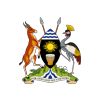Bwindi Impenetrable Forests National Park
Situated in south-western Uganda on the edge of the Rift Valley. Mist-covered hillsides, one of Uganda’s oldest and most biologically diverse rainforests dating back over 25,000 years. The forest is one of the richest ecosystems in Africa, hosting 400 species of plants, roughly 320 mountain gorillas, about half of the world’s population, 350 species of birds and 120 mammals.
Rwenzori Mountain National Park
Known as “Mountains of the Moon” a UNESCO World Heritage Site, in western Uganda along the Congo border. Covering 100,000 ha with equatorial snow peaks including the 3rd highest point in Africa Magharita 5,109m. The lower slopes are blanketed in moorland, bamboo and rich, moist montane forest. The park hosts 70 mammals, 217 bird species including 19 Albertine Rift endemics and some of the world’s rarest vegetation.
Queen Elizabeth National Park
Located in western Uganda, and is Uganda’s most-visited National Park. Named after Queen Elizabeth II and was established in 1954. The park’s diverse ecosystems includes sprawling savanna, shady, humid forests, sparkling lakes and fertile wetlands, make it the ideal habitat and to home to over 95 mammal species including chimpanzees and over 600 species of birds.
Murchison Falls National Park
Murchison Falls National Park is Uganda’s largest national park measuring about 3,840 square kilometres (1,480 sq mi). The park hosts 76 species of mammals and 451 birds that include elephants, giraffes and buffaloes, hippos, Nile crocodiles and aquatic birds.At Murchison Falls, the Nile squeezes through an 8m wide gorge and plunges with a thunderous roar into the “Devil’s Cauldron”, creating a trademark rainbow. First gazetted as a game reserve in 1926, it is Uganda’s largest and oldest conservation area.
Kibale National Park
The park in western Uganda is 766 km^2 in size and located between 1100 and 1600 meters in elevation. Despite encompassing primarily moist evergreen forest, it contains a diverse array of landscapes. Kibale is one of the last remaining expanses to contain both lowland and montane forests. In East Africa. The park is home to a total of 70 mammal species, most famously 13 species of primate including the chimpanzee and over 375 species of birds.
Mt. Elgon National Park
At 4,000km² , Mt. Elgon has the largest volcanic base in the world. Located on the Uganda-Kenya border it is also the oldest and largest solitary, volcanic mountain in East Africa. 80km in diameter, rises more than 3,000m above the surrounding plains. The mountain’s cool heights offer respite from the hot plains below, with the higher altitudes providing a refuge for flora and fauna. The Park is home to over 300 species of birds, including the endangered Lammergeyer. Small antelopes, forest monkeys, elephants and buffalos that live on the mountainside.
Semliki National Park
The park sprawls across the floor of the Semliki Valley on the remote, western side of the Rwenzori. It is dominated by the Africa’s most ancient and bio-diverse great Ituri Forest of the Congo Basin. This is one of the few forests that survive the last ice age, 12-18,000 years ago. While Semuliki’s species have been accumulating for over 25,000 years, the park contains evidence of even older processes. Hot springs bubble up from the depths to demonstrate the powerful subterranean forces that have been shaping the rift valley during the last 14 million years.
Kidepo Valley National Park
The Park lies in the rugged, semi-arid valleys between Uganda’s borders with South Sudan and Kenya, 700km from Kampala. Gazetted as a national park in 1962, it has a profusion of big game and hosts over 77 mammal species as well as around 475 bird species.
Lake Mburo National Park
The park is a compact gem, located conveniently close to the highway that connects Kampala to the parks of western Uganda. It is the smallest of Uganda’s savannah national parks and underlain by ancient Precambrian metamorphic rocks which date back more than 500 million years. It is home to 350 bird species as well as zebra, impala, eland, buffalo, oribi, Defassa waterbuck, leopard, hippo, hyena, topi and reedbuck.
Lake Bunyonyi
The lake is believed to be the second deepest lake in Africa with its deepest at about 900m. The lake is dotted with 29 islands. The most prominent of these include the Akampene Island also known as the punishment island, Bushara, Kyahugye, Bwama and Njuyeera, and Bucuranuka. Home of Otters, crayfish and many little birds and cover districts of Kisoro and Kabale. The lake is about 25 km long and 7 km wide covering an area of 61 square kilometers.
Ngamba Island Chimpanzee Sanctuary
Located 23km southeast of Entebbe in Lake Victoria, Ngamba Island Chimpanzee Sanctuary, or ‘Chimp Island’, is home to over 40 orphaned or rescued chimpanzees. They emerge from the forest twice a day to feed at 11am and 2.30pm. Come observe the animals’ remarkable behaviours, individual profiles, distinct personalities and history. The Island is also home to big monitor lizards and birdlife
